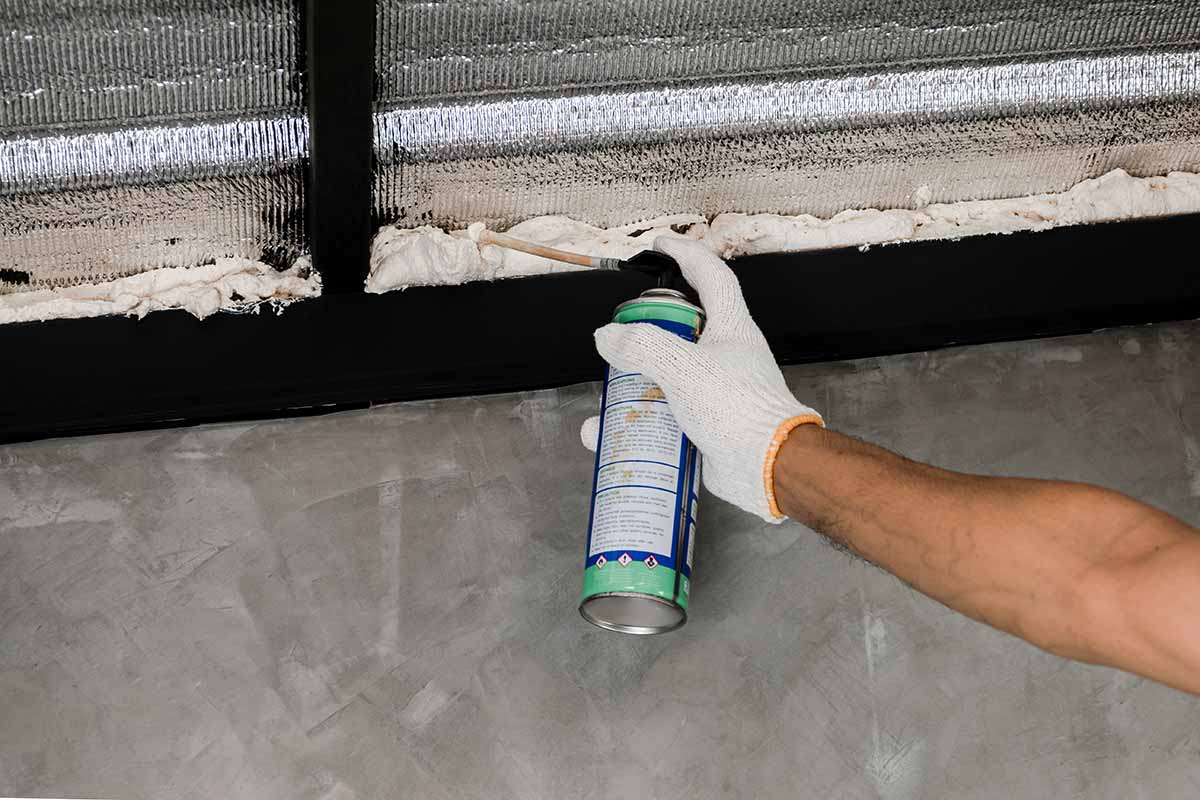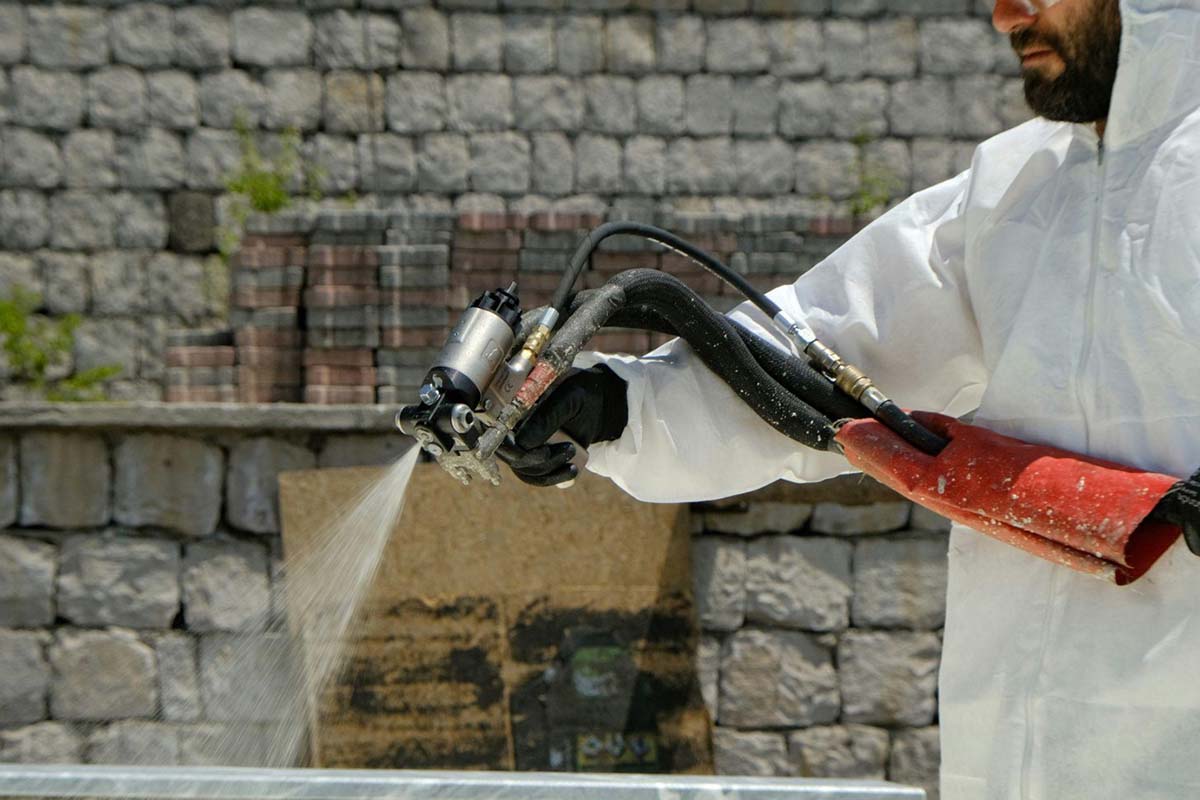What Exactly Is Spray Foam Insulation?
Adding spray foam is one of the best methods to improve a home’s comfort and energy efficiency. This insulation is sprayable, so both pros and do-it-yourselfers may use it to fill in all the little gaps that fiberglass batts could miss between studs, rafters, and other areas.
The formula expands where it is applied. The essential information for anybody thinking about purchasing insulation is explained in this guide.
Spray foam insulation: What Is It?
When two chemicals (usually isocyanate and polyol resin) come together, a composite substance known as insulation is created. These chemicals come together at the tip of the spray gun after being stored in two containers or tanks and moved by the pressure of a gas or a liquid.
As they cross paths, they respond and combine to get a foam mixture. After that, the foam solidifies, forming a strong moisture barrier. Little spaces known as “cells” are present in this foam. Sound and heat energy find it difficult to go through the foam because of the gaps and barriers these cells produce. Additionally, because the best spray foam insulation expands to fill the sprayed area, these pockets will fit into even the smallest crevices. Spray foam is an incredibly powerful insulator because of these features.
How Does Insulation Made of Spray Foam Work?
Applying an insulation solution that will expand and freeze into a product that resembles foam is known as insulation. This type of foam is frequently utilized in residential and commercial structures to increase efficiency, improve insulation (https://www.oregon.gov/bcd/codes-stand/Documents/23orsc/2023orsc-chapter11-draft.pdf), and ease. With both open-cell as well as closed-cell options available, let us examine how insulation functions:
- Preparation: Make sure the space is ready before insulation is applied.
- Application: The blended liquid foam will be sprayed onto the surface. As a result of its expansion, the foam may fill up voids, fissures, and crevices to form an uninterrupted layer of insulation.
- Properties of insulation: After curing, the foam will then create a strong, long-lasting layer of insulation that prevents heat transmission. Click here for more on heat transfer. The foam’s cellular, or base, structure helps it retain moisture by trapping air.
Although this is the basis of most insulation, the greater density of closed-cell foam makes it superior to open-cell foam in terms of moisture resistance and insulating value.
Spray foam insulation types
In essence, there are two varieties of aerosol foam insulation. Both materials expand in situ and are made of a mixture of two chemicals, but their insulation methods are different. They are among the best forms of insulation as well.
Insulation using Foam
Open cell is the initial variety of spray foam insulation. Open cell insulation, as the name implies, comprises tiny, partially enclosed pockets. These foams expand significantly—up to three inches every pass—while the dried foam maintains a fair amount of softness and flexibility. Compared to their closed-cell cousins, these products are less environmentally hazardous because they usually employ carbon dioxide or water as the propellant.
An excellent barrier against sound and air movement is produced by open-cell foam. It works well on roofs, walls, and ceilings. However, because of its open cells, this kind of foam is more inclined to collect vapor and moisture; hence, in many applications, it may be necessary to incorporate a vapor barrier inside the foam.
What exactly is spray foam insulation: closed Insulation Made of Cell Spray Foam
In terms of creating an air barrier, closed-cell insulation made of spray foam is comparable to open-cell insulation. The discrete pockets or cells that have developed within this foam, however, are entirely closed. Additionally, this foam insulation is far stiffer than open cells since the cells are packed considerably more tightly (in some situations, this can even increase structural integrity).
Insulation made of closed-cell spray foam is far more efficient against vapor and moisture since its pockets are enclosed. Additionally, the insulation value of these confined pockets is increased; an inch can provide upwards of R-6.5 of insulation. Since closed-cell foam grows far less than open-cell foam (about one inch for each application), adding more “coats” is also simpler.
However, closed-cell foams usually use hydrofluorocarbons (https://us.eia.org/campaigns/climate/what-are-hydrofluorocarbons/) as the propellant; nevertheless, compared to propellants used in open-cell alternatives, HFCs are far less ecologically benign.
Spray foam insulation has advantages and disadvantages, much like any other construction material. When deciding if this kind of insulation is the best option for a property, it is important to consider the following factors.
Remember that spray foam insulation with closed cells provides more insulation per board foot than with open cells. Furthermore, adding further layers of transparent cell insulation is frequently not cost-effective since it typically exceeds the depth behind the studs and is wasted (requiring pruning).




















